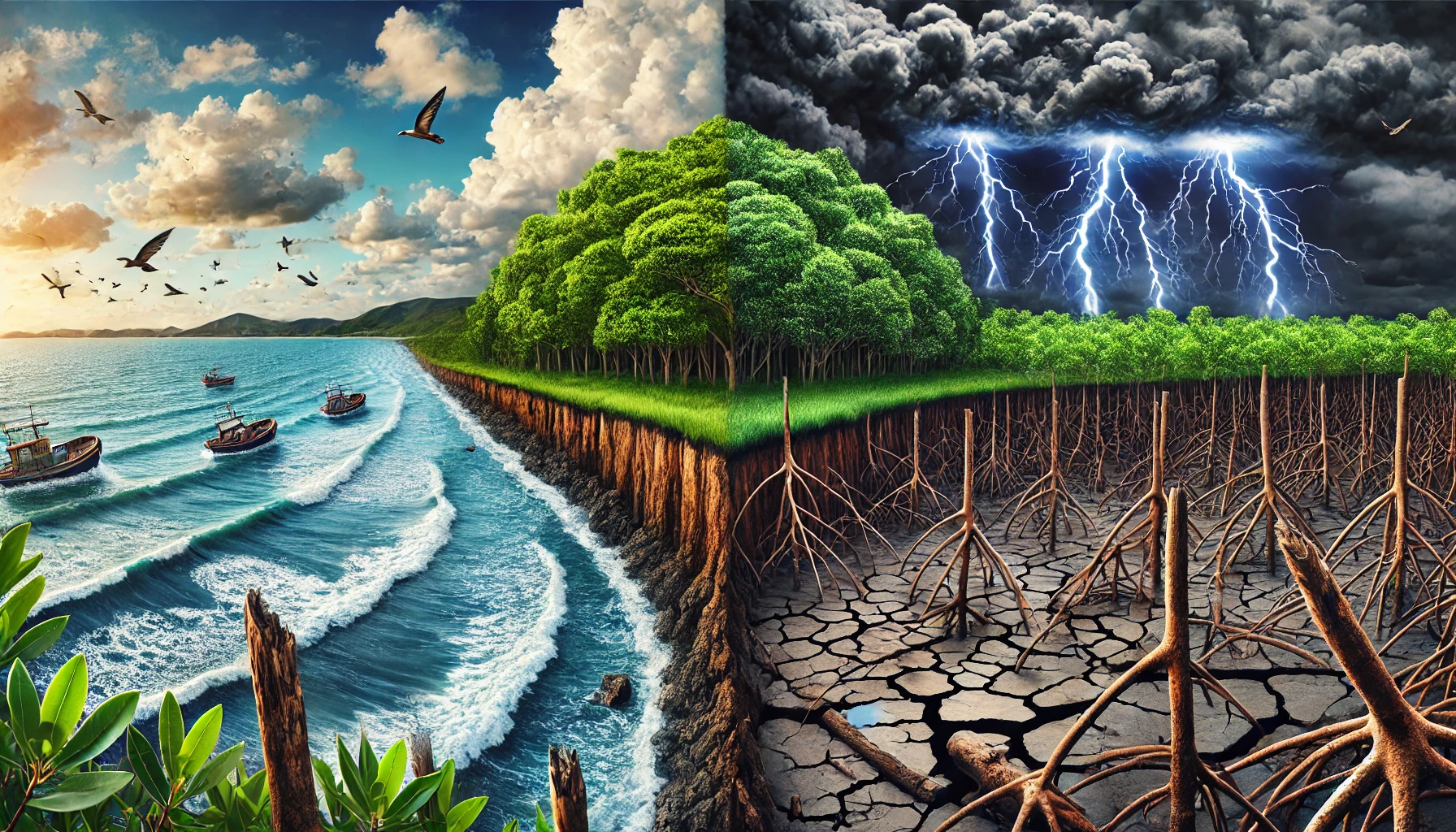Mangroves and Society: Metaphor for Division & Collapse
written by
jaron summers (c) 2024
The destruction of mangroves serves as a metaphor for the way political and social divisions are tearing apart the fabric of our world.
Just as mangroves act as natural barriers that protect coastlines from erosion and storm surges, healthy societies rely on a balance of diverse perspectives, cooperation, and shared values to maintain stability.
Mangroves nurture ecosystems by fostering connections between land and sea, while societies flourish when their people, despite differences, are united by a sense of common purpose.
However, when mangroves are destroyed, the protective buffer they provide disappears, exposing coastlines to erosion, storms, and flooding. Similarly, when people are turned against each other by political manipulation, misinformation, or extreme partisanship, the social fabric erodes.
The sense of shared responsibility and mutual protection dissolves, leaving societies vulnerable to internal strife and external threats. Political polarization creates fractures where once there was common ground, just as the loss of mangroves fractures ecosystems that once thrived in harmony.
Furthermore, the destruction of mangroves releases the carbon they had stored, exacerbating climate change, much like the way division and conflict fuel societal breakdown.
Instead of addressing collective challenges like poverty, inequality, and climate crisis, political discord shifts the focus inward, turning potential cooperation into adversarial posturing. This deepening divide leads to instability and makes it more difficult to address global issues that require unity.
As mangroves are essential to the health of coastal ecosystems, so too is social cohesion essential to the well-being of the world.
The metaphor reveals that when these crucial “buffers” — both environmental and social — are neglected or deliberately destroyed, the long-term damage is far-reaching, weakening our capacity to withstand crises and undermining the stability needed for growth and progress.
***********
Carl Sauer made the comparison between mangroves and political divisions in his 1969 work titled “The Morphology of Landscape.” In this essay, he discussed the ways natural landscapes, such as mangroves, act as boundaries and shape human interactions with geography, using the comparison to emphasize the role of physical geography in forming societal divisions.



